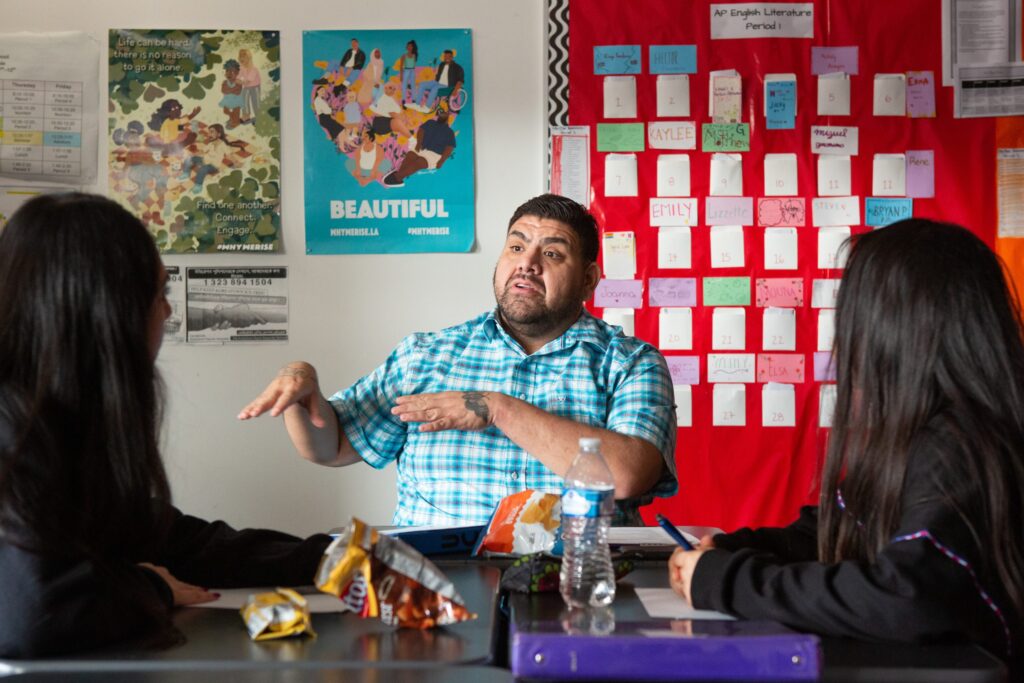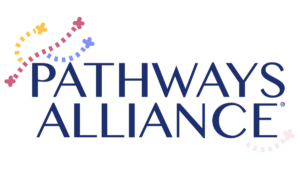Registered Teacher Apprenticeship Programs: A 50-State Scan
Registered Teacher Apprenticeship Programs let candidates earn a salary, train with a mentor & work toward teaching licensure

 Registered teacher apprenticeship programs (RTAPs) are a relatively new form of teacher preparation. First arising out of Tennessee and New York in 2022, these programs allow candidates to earn a salary, train under a mentor teacher, all while working toward teaching licensure and, when applicable, a bachelor’s or master’s degree. The U.S. Department of Labor has identified teaching as an apprenticeable trade, enabling programs to register with the Office of Apprenticeship or their respective State Apprenticeship Office, and has supported the development of the National Guidelines for Apprenticeship Standards for K-12 Teacher Apprenticeships by The Pathways Alliance. RTAPs offer flexible, employer-driven, and federally supported pathways that allow districts and educator preparation programs (EPPs) to design a teacher recruitment and preparation strategy to meet their local workforce needs. Although RTAPs vary by program and state, they are often tailor-made for currently employed, non-teacher school staff (such as paraprofessionals or long-term substitutes) who are looking to advance their careers as educators.
Registered teacher apprenticeship programs (RTAPs) are a relatively new form of teacher preparation. First arising out of Tennessee and New York in 2022, these programs allow candidates to earn a salary, train under a mentor teacher, all while working toward teaching licensure and, when applicable, a bachelor’s or master’s degree. The U.S. Department of Labor has identified teaching as an apprenticeable trade, enabling programs to register with the Office of Apprenticeship or their respective State Apprenticeship Office, and has supported the development of the National Guidelines for Apprenticeship Standards for K-12 Teacher Apprenticeships by The Pathways Alliance. RTAPs offer flexible, employer-driven, and federally supported pathways that allow districts and educator preparation programs (EPPs) to design a teacher recruitment and preparation strategy to meet their local workforce needs. Although RTAPs vary by program and state, they are often tailor-made for currently employed, non-teacher school staff (such as paraprofessionals or long-term substitutes) who are looking to advance their careers as educators.
Access to a well-prepared and diverse teacher workforce is essential for developing a healthy P-12 education system that serves all students. Like high-quality Grow Your Own (GYO) programs and teacher residencies, we believe that RTAPs can serve as important tools for state policymakers and district leaders to diversify teacher workforces. To realize this potential and develop informed policy recommendations, it’s necessary to understand state progress in creating, implementing, and structuring RTAPs.
Teacher apprenticeships have now expanded to 45 states, plus the District of Columbia and Puerto Rico. This growth has produced various program models with different sponsoring organizations, statewide intermediaries, and a wide variety of implementation approaches.
With that in mind, this *50-state scan explores the nascent landscape of RTAPs across the country, collecting and linking to publicly available information from state government websites. The scan was jointly created by EdTrust and The Pathways Alliance led by InnovateEDU. We hope this resource provides state-level policymakers, district leaders, and other interested stakeholders with a better understanding of RTAP developments in their own and other states and enables them to develop a diverse, high-quality teacher workforce for all students.
Status (Active RTAPs, Active Non-Registered Teacher Apprenticeship Programs, No RTAPs)
States are approaching registered teacher apprenticeship program (RTAP) creation and growth in different ways.
Is the state the sponsor? If yes, what entity?
RTAPs need a sponsor organization to be formally registered by the Department of Labor’s Office of Apprenticeship (OA) or their respective State Apprenticeship Agency (SAA). The sponsor is largely responsible for the operation and administration of an RTAP, which includes defining the competencies apprentices must meet, the schedule for meeting these competencies and receiving wage increases, the ratio of mentors to apprentices, and the apprenticeship program’s governance structure (LPI). Sponsors can be employers (school districts), educational institutions, labor unions, government agencies, or other entities (ApprenticeshipUSA). Our 50-state scan separates states into two categories: Those where the state is the sponsor, and those where another entity, usually an EPP, is the sponsor.
In some cases, the SEA website clearly identifies whether the state is the sponsor. When SEA websites were unclear or lacked details, we used ApprenticeshipUSA’s Partner Finder tool. To use this resource, select the “Search By Need” tab. Input the state’s name or initials and, making sure “Search by Occupation” is checked, type “K-12 Teacher” into the bottom box. Select the following option from the dropdown menu: K-12 Teacher (25-3099.00: Teachers and Instructors, All Other). Finally, check the box “I want to learn from sponsors,” and click search.
In instances where the state is the RTAP sponsor, we identify which state entity oversees the operation and administration of RTAPs.
What is the Registration Agency? Department of Labor Office of Apprenticeship (OA) or State Apprenticeship Agency (SAA)?
A registration agency is responsible for registering programs and apprentices, providing technical assistance, and ensuring that apprenticeship programs comply with federal law (LPI). Some states have a state apprenticeship agency that has been recognized by the Department of Labor Office of Apprenticeship to act on behalf of the federal U.S. Department of Labor in registering and overseeing programs in their states. Apprenticeship USA tracks this information on their Apprenticeship System page.
Available state-level guidelines or rules? Summary of available state-level guidelines or rules.
In June 2023, the federal Office of Apprenticeship supported the development of the National Guidelines for Apprenticeship Standards for K-12 Teacher Apprentices by The Pathways Alliance. Among other recommendations, these standards suggest: (1) a ratio of two apprentices to one journeyworker; (2) apprentices should be paid a progressively increasing schedule of wages; (3) apprentices must be at least 18 years old and should not serve as the teacher-of-record at any point during the apprenticeship; (4) apprentices should achieve program competencies within a minimum of 2,000 hours of on-the-job learning; and (5) the apprenticeship should lead to full state K-12 teacher licensure or certification.
States can choose to add their own program requirements or rules, however, which we track in these categories.
For this scan, “available state-level guidelines or rules” constitute any state-level legislation specifically pertaining to RTAPs, public statements or formal guidance published by SEAs instituting rules or eligibility requirements applicable to all RTAPs in the state, or rules and/or eligibility requirements on any SEA RTAP applications submitted to USDOL for approval.
How are states describing the in-school clinical component of their apprenticeship model/programs?
This category captures how states describe the value and/or aims of their registered teacher apprenticeship programs, along with any additional information about the in-school clinical. In most instances, state descriptions of apprenticeship programs summarize program components. In other instances, such as Colorado, states specify on-the-job training hours and other requirements for in-school clinicals.
Does the state bar apprentices from serving as the teacher of record?
The National Guidelines for Apprenticeship Standards for K-12 Teacher Apprentices notably states that at no point during an apprenticeship program should an apprentice serve as the teacher of record. This category identifies states that explicitly reiterate this policy in rules or guidance.
Is the state appropriating non-federal funds specifically for registered teacher apprenticeship programs? What available information exists on how these programs are funded?
Most states have relied on ARP and other federal grants to operate and sustain their growing RTAPs. These categories aim to identify states that are allocating non-federal dollars into RTAPs and, regardless of source, any public-facing information regarding RTAP investments. RTAPs are generally funded through a wide variety of grants at many levels of governance. We fully anticipate that our analysis missed certain funding sources, given the sheer complexity of the RTAP funding landscape. However, we still felt it was important to highlight any public-facing information showcasing how these programs are funded for transparency.
Does the state have a teacher apprenticeship hub webpage?
This category tracks whether the state has a webpage dedicated to registered teacher apprenticeship programs.
Additional Information
This category tracks additional information that does not fit into other categories.
Any emphasis on teacher diversity from the state?
This category tracks whether published RTAP information includes language emphasizing the importance of RTAPs in increasing teacher diversity. Information is pulled from state education agency websites, public addresses by state leaders, and relevant state apprenticeship partners.
Total Number of Teacher Apprentices
This category uses ApprenticeshipUSA’s Apprentices by State Dashboard to show the total number of registered teacher apprenticeships in each state. It is worth noting that this data is updated slowly, as many states with active RTAPs appear to have zero apprentices in this database.
To use this resource, first select the tab “Apprentices by Program Location.” Next, click the dropdown menu under “Occupation,” deselect “All” option, and scroll down to select “K-12 Teachers.” Once you hit “Apply,” a map of the United States will populate with the updated number of teacher apprentices for each state.
Launched in 2021, The Pathways Alliance is a coalition of organizations dedicated to supporting and implementing diverse and inclusive educator preparation pipelines, including teacher residency programs. Effective and affordable education preparation programs and pathways are essential for teachers, students, and schools. The Pathways Alliance aims to make this possible.
*NOTE: Data collection occurred from May to August 2024, and findings were shared with state apprenticeship offices and/or education agencies for review. While most of the scan can be linked to public information, some details were provided by state entities or national organizations in the RTAP space. As with any 50-state scan, there might being small inaccuracies or omissions. If you see any errors or can provide additional context, please contact us so we can make this scan as accurate as possible.